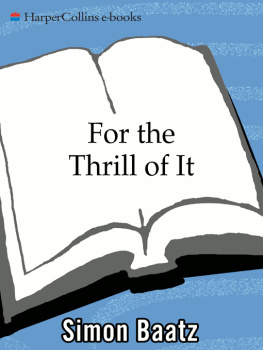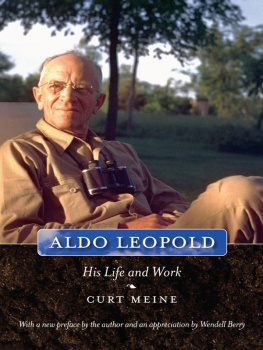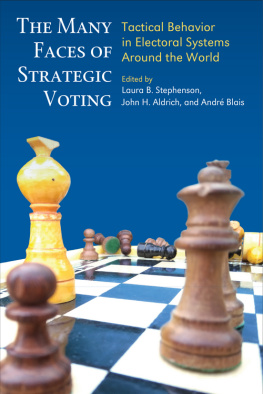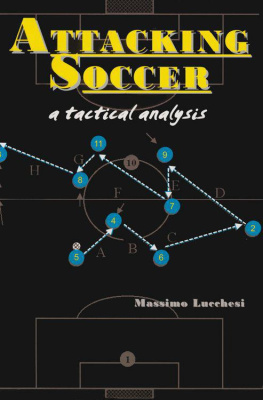Leopold Scholtz - The SADF and Cuito Cuanavale: A Tactical and Strategic Analysis
Here you can read online Leopold Scholtz - The SADF and Cuito Cuanavale: A Tactical and Strategic Analysis full text of the book (entire story) in english for free. Download pdf and epub, get meaning, cover and reviews about this ebook. year: 2020, genre: Art. Description of the work, (preface) as well as reviews are available. Best literature library LitArk.com created for fans of good reading and offers a wide selection of genres:
Romance novel
Science fiction
Adventure
Detective
Science
History
Home and family
Prose
Art
Politics
Computer
Non-fiction
Religion
Business
Children
Humor
Choose a favorite category and find really read worthwhile books. Enjoy immersion in the world of imagination, feel the emotions of the characters or learn something new for yourself, make an fascinating discovery.
- Book:The SADF and Cuito Cuanavale: A Tactical and Strategic Analysis
- Author:
- Genre:
- Year:2020
- Rating:4 / 5
- Favourites:Add to favourites
- Your mark:
- 80
- 1
- 2
- 3
- 4
- 5
The SADF and Cuito Cuanavale: A Tactical and Strategic Analysis: summary, description and annotation
We offer to read an annotation, description, summary or preface (depends on what the author of the book "The SADF and Cuito Cuanavale: A Tactical and Strategic Analysis" wrote himself). If you haven't found the necessary information about the book — write in the comments, we will try to find it.
The SADF and Cuito Cuanavale: A Tactical and Strategic Analysis — read online for free the complete book (whole text) full work
Below is the text of the book, divided by pages. System saving the place of the last page read, allows you to conveniently read the book "The SADF and Cuito Cuanavale: A Tactical and Strategic Analysis" online for free, without having to search again every time where you left off. Put a bookmark, and you can go to the page where you finished reading at any time.
Font size:
Interval:
Bookmark:


THE
AND
CUITO
CUANAVALE
A TACTICAL AND STRATEGIC ANALYSIS
LEOPOLD SCHOLTZ
DELTA BOOKS
JOHANNESBURG & CAPE TOWN
On 23 March 2018 I participated in a colloquium, organised by the Royal Institute of International Affairs, at its London headquarters in Chatham House, about the so-called Battle of Cuito Cuanavale. This was, of course, exactly 30 years after the third and last failed South African attack on the Angolan/Cuban defenders in front of Cuito Cuanavale. As the event was sponsored by the Angolan government, it was understandably a rather one-sided affair, with numerous speakers repeating the official Cuban and Angolan version of events. The other side, so to speak, was left to Major-General Roland de Vries, British journalist Fred Bridgland, Chester Crocker (former US Assistant Secretary of State for African Affairs) and myself.
In the paltry ten minutes allowed to me, I made one major point. Differing interpretations are perfectly legitimate, but interpretations must be based on original research. None of the speakers following the Angolan/Cuban line had done that. (The sole exception was Professor Piero Gleijeses, whose work is discussed in Chapter 12.) The wildest intentions were ascribed to the South African government of the time and to the South African Defence Force (SADF), without reference to the original documents.
I had seen many of those documents during a previous research visit to the Documentation Centre of the South African National Defence Force (SANDF). But, as I had no plans at the time to write about the controversy surrounding Cuito Cuanavale, I did not copy them. The Chatham House colloquium was the deciding factor for me to go back to the SANDF Documentation Centre, get the documents, and use them for a proper analysis.
This book actually started as two. First, I wanted to explore the role played by the town of Cuito Cuanavale in the strategic, operational and tactical planning of the SADF during Operations Moduler, Hooper and Packer in 19871988. After all, it is often alleged that the South Africans wanted to take the town. This would have been, it is said, a precursor to a push into central Angola and even on to Luanda in order to bring about regime change. The Foras Armadas Populares de Libertao de Angola (Fapla), the armed forces of the governing Marxist Movimento Popular de Libertao de Angola (MPLA), would be driven out and South Africas ally, the Unio Nacional Para a Independncia Total de Angola (Unita), would become the effective Angolan government.
The remarkable thing about this allegation is that it is nowhere buttressed by archival research. All sorts of plans and strategies are ascribed to the South African government and the SADF but without any documentary proof. My purpose, then, was to have a look at the original documents and see what they revealed.
The second book was to be a professional tactical study of six selected battles of the campaign. These were the battles on the Lomba River (3 October 1987), the two on the Chambinga (9 and 11 November 1987) and the three SADF attacks on the Tumpo area (25 February, 1 March and 23 March 1988). The South Africans won the first three devastatingly, but lost the last three badly. Why the difference? The forces involved, after all, did not change that much. I wanted to identify the factors why the South Africans at first had won three victories and then lost the last three battles. In this respect, the 14 principles of warfare applied by the SADF at the time proved to be a useful tool. (These principles are discussed in detail in Chapter 10.)
Having submitted the two manuscripts, my publisher came up with the idea of combining them into a single volume. I have, therefore, chopped and changed a lot. The strategic and operational approach is interspersed with the tactical minutiae of the selected six battles in a manner that more or less preserves the chronological order of the campaign.
I hope the book will make a contribution to our understanding of a pivotal time in the history of South Africa and of southern Africa as a whole.
It often happens that a shooting war is either immediately or after a while followed by a second war. This is not fought with bullets or artillery shells, not with tanks or bombers, but rather with words. The war is, in effect, fought again on paper.
In this re-enactment, historians normally play an important role, and their debates sometimes become rather robust, to put it mildly. The Dutch historian Pieter Geyl famously described historical writing as a discussion without end. For instance, the stream of books about the First World War began shortly after the Peace of Versailles in 1919. The focal point was the question of how the war broke out and Germanys alleged guilt for starting it. In his seminal examination of the matter, Australian historian Christopher Clark writes about a bewildering variety of interpretations: There is literally no viewpoint on its [the wars] origins that cannot be supported from a selection of the available sources. And this in turn helps to explain why the WWI origins literature has assumed such vast dimensions that no single historian could hope to read it all in one lifetime
Something similar, though on a far more modest scale and with a different focal point, applies to the conflict generally known in South Africa as the Border War (19661989), and especially to the final, conventional phase in southern Angola, mostly referred to as the Battle of Cuito Cuanavale. In this case, however, professional historians have long played second fiddle to politicians, journalists and other non-academic authors. Perhaps it is time that historians reclaimed the terrain they have ceded to others.
For the sake of clarity, though at the risk of oversimplification, one can identify two schools of thought. One, led by the late Cuban dictator Fidel Castro, contends that the alliance of Cuba, the Angolan MPLA government and the Namibian rebel movement Swapo (South West Africa Peoples Organisation) won a great victory at Cuito Cuanavale. This victory, so that version goes, not only thwarted the racist South African governments imperialist plans to neutralise the socialist revolution in Angola, but also broke Pretorias back and forced the apartheid politicians to withdraw from Angola and Namibia and, finally, in 1994, to transfer power to the African National Congress (ANC). This narrative is supported by the communist establishment in Cuba, the MPLA, Swapo, the ANC and by a number of left-wing academics and authors.
Even before the end of the fighting, in May 1988, Castro triumphatically told a summit of the Non-Aligned Movement in Havana: The battle and its outcome are of historic importance. More than six months have passed and they are far from taking Cuito Cuanavale, and they will not be able to take Cuito Cuanavale. There has been a total change in the balance of power.
A few months later, he resumed his verbal barrage: There, in Cuito Cuanavale, South African aggressiveness broke its teeth and all this with a minimum of casualties minimum casualties! on the part of the Angolan and Cuban forces The fact is that the balance changed drastically. The South Africans had suffered an overwhelming defeat in Cuito Cuanavale
If one may identify a leader of the opposite school, it would probably be the late General Jannie Geldenhuys, who was Chief of the SADF at the height of the Border War. In his memoirs, as well as in several articles and newspaper interviews, he made the case that South Africa had only limited objectives in Angola and achieved nearly all of them. Geldenhuyss view is supported by the old SADF and National Party government establishment, and by some writers.
Font size:
Interval:
Bookmark:
Similar books «The SADF and Cuito Cuanavale: A Tactical and Strategic Analysis»
Look at similar books to The SADF and Cuito Cuanavale: A Tactical and Strategic Analysis. We have selected literature similar in name and meaning in the hope of providing readers with more options to find new, interesting, not yet read works.
Discussion, reviews of the book The SADF and Cuito Cuanavale: A Tactical and Strategic Analysis and just readers' own opinions. Leave your comments, write what you think about the work, its meaning or the main characters. Specify what exactly you liked and what you didn't like, and why you think so.




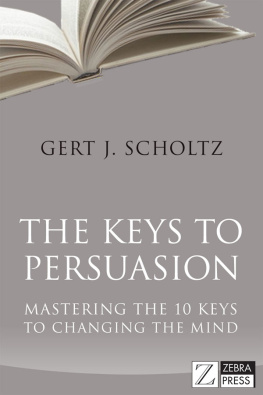
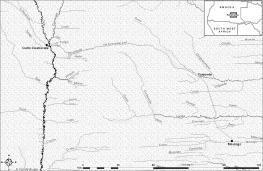

![Scholtz - Munch: [#trendygoodfood]](/uploads/posts/book/234356/thumbs/scholtz-munch-trendygoodfood.jpg)
